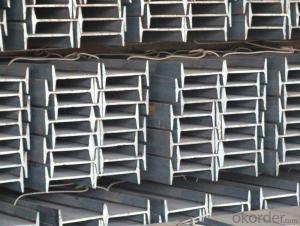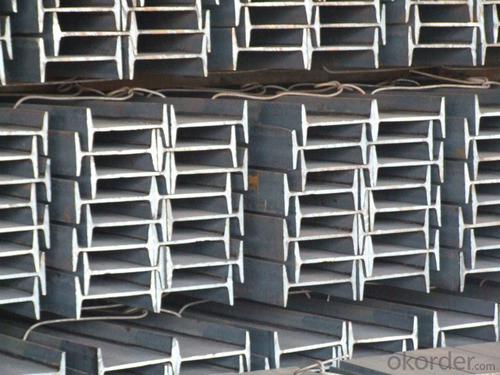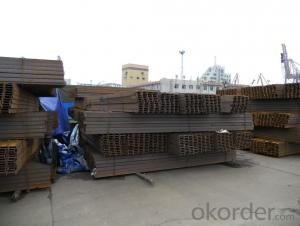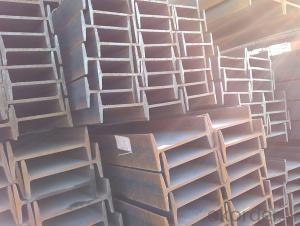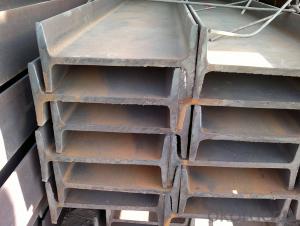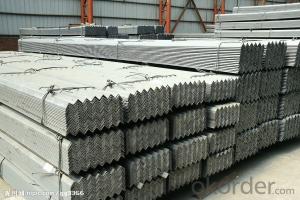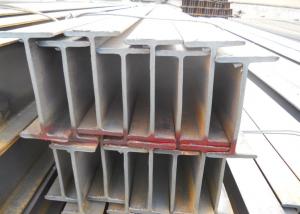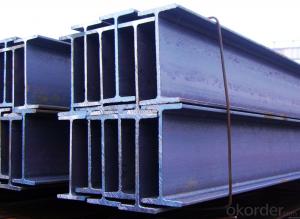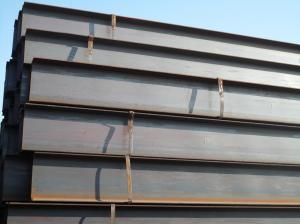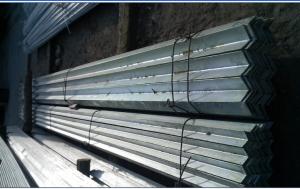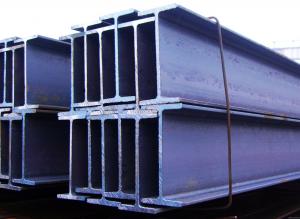Standard Hot Rolled Steel I-Beam
- Loading Port:
- Qingdao
- Payment Terms:
- TT or LC
- Min Order Qty:
- 300 PCS
- Supply Capability:
- 40000 PCS/month
OKorder Service Pledge
OKorder Financial Service
You Might Also Like
Standard Hot Rolled Steel I-Beam
OKorder is offering high quality Standard Hot Rolled Steel I-Beams at great prices with worldwide shipping. Our supplier is a world-class manufacturer of steel, with our products utilized the world over. OKorder annually supplies products to European, North American and Asian markets. We provide quotations within 24 hours of receiving an inquiry and guarantee competitive prices.
Product Applications:
Standard Hot Rolled Steel I-Beams are ideal for structural applications and are widely used in the construction of buildings and bridges, and the manufacturing, petrochemical, and transportation industries.
Product Advantages:
OKorder's Steel I-Beams are durable, strong, and resist corrosion.
Main Product Features:
· Premium quality
· Prompt delivery & seaworthy packing (7-10 days after receiving deposit)
· Corrosion resistance
· Can be recycled and reused
· Mill test certification
· Professional Service
· Competitive pricing
Product Specifications:
Brand: Baoming
Grade: SS400 – SS490, Q195, Q215, Q235
Model Number: 10# – 63#
Dimensions:
Leg Height: 100 – 630mm
FAQ:
1: Why buy Materials & Equipment from OKorder.com?
A1: All products offered byOKorder.com are carefully selected from China's most reliable manufacturing enterprises. Through its ISO certifications, OKorder.com adheres to the highest standards and a commitment to supply chain safety and customer satisfaction.
Q2: How do we guarantee the quality of our products?
A2: We have established an advanced quality management system which conducts strict quality tests at every step, from raw materials to the final product. At the same time, we provide extensive follow-up service assurances as required.
Q3: How soon can we receive the product after purchase?
A3: Within three days of placing an order, we will begin production. The specific shipping date is dependent upon international and government factors, but is typically 7 to 10 workdays.
Q4: What makes stainless steel stainless?
A4: Stainless steel must contain at least 10.5 % chromium. It is this element that reacts with the oxygen in the air to form a complex chrome-oxide surface layer that is invisible but strong enough to prevent further oxygen from "staining" (rusting) the surface. Higher levels of chromium and the addition of other alloying elements such as nickel and molybdenum enhance this surface layer and improve the corrosion resistance of the stainless material.
Q5: Can stainless steel rust?
A5: Stainless does not "rust" as you think of regular steel rusting with a red oxide on the surface that flakes off. If you see red rust it is probably due to some iron particles that have contaminated the surface of the stainless steel and it is these iron particles that are rusting. Look at the source of the rusting and see if you can remove it from the surface.
Images:
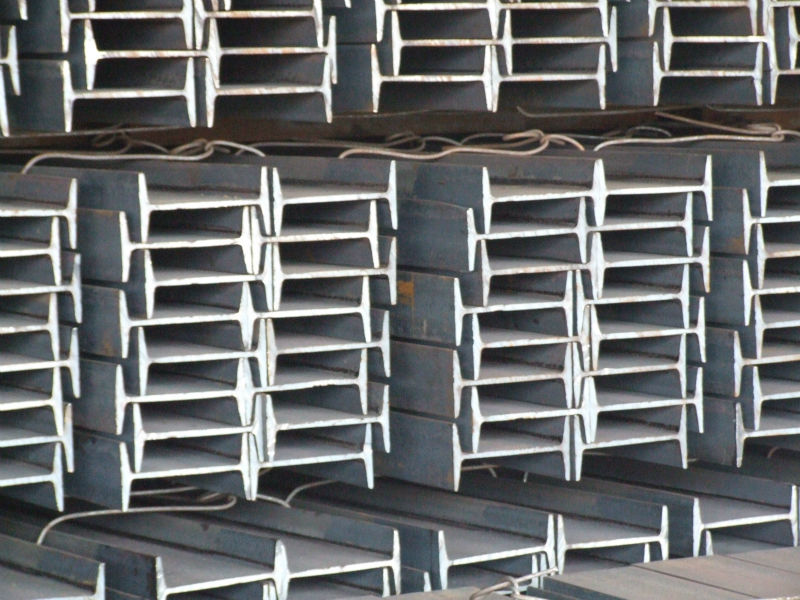
- Q: What are the different connection methods used with steel I-beams?
- There are several different connection methods used with steel I-beams, depending on the specific application and structural requirements. Some of the common connection methods include: 1. Welding: Welding is one of the most common and efficient methods of connecting steel I-beams. It involves fusing the ends of the I-beams together using heat, creating a strong and permanent connection. Welding can be done using various techniques such as arc welding, MIG welding, or TIG welding. 2. Bolting: Bolting is another widely used method for connecting steel I-beams. It involves using bolts and nuts to secure the I-beams together. This method allows for easy disassembly and reassembly if needed. It is commonly used in situations where the connection needs to be adjustable or when welding is not feasible. 3. Riveting: Riveting involves using metal fasteners called rivets to join the I-beams together. It is a traditional method that has been used for many years. Riveting provides a strong and durable connection, but it is a more time-consuming and labor-intensive process compared to welding or bolting. 4. Tensioning: Tensioning is a method that uses high-strength bolts and nuts to clamp the ends of the I-beams together. This method is commonly used in situations where the I-beams need to be connected with minimal deformation or when a high level of adjustability is required. 5. Adhesive bonding: Adhesive bonding involves using high-strength epoxy or adhesive to bond the I-beams together. This method is typically used in specialized applications where welding or bolting is not suitable, or when a seamless and aesthetically pleasing connection is desired. It is important to note that the choice of connection method depends on various factors such as load requirements, structural design, cost, and construction time. Consulting a structural engineer or a construction professional is recommended to determine the most appropriate connection method for a specific project.
- Q: Can steel I-beams be fire-resistant?
- Yes, steel I-beams can be made fire-resistant through various methods. One common method is the application of fire-resistant coatings or intumescent paints on the surface of the steel beam. These coatings are designed to expand and create a protective layer when exposed to high temperatures, insulating the steel from the heat and preventing it from reaching its critical temperature. Another method is the use of fire-resistant insulation materials, such as mineral wool or ceramic fiber, which are wrapped around the steel beam. These insulation materials slow down the transfer of heat to the steel, enhancing its fire resistance. Moreover, steel I-beams can be engineered to be fire-resistant by increasing their size or adding additional fire-resistant materials, such as concrete encasements. These measures help to protect the structural integrity of the steel beam during a fire and prevent it from collapsing. It is important to note that while steel I-beams can be made fire-resistant, their fire resistance depends on the specific fire rating of the applied coatings, insulation materials, or additional measures. It is crucial to consult with fire protection engineers and adhere to building codes and regulations to ensure proper fire protection measures are in place.
- Q: How are steel I-beams supported during installation?
- Steel I-beams are typically supported during installation using temporary structures such as cranes or hoists. These devices are used to lift and position the beams into place, while additional support may be provided by temporary columns or braces until the beams are securely bolted or welded to the permanent structure.
- Q: Are steel I-beams resistant to rot or decay?
- No, steel I-beams are not susceptible to rot or decay because they are made of metal and do not contain organic materials that can decompose over time.
- Q: What are the different types of steel I-beam connections used in seismic design?
- Seismic design utilizes various steel I-beam connections to ensure structural integrity and resistance against seismic forces. These connections are crucial in withstanding lateral forces and vibrations experienced during earthquakes, ensuring the safety and stability of the structure. Here are different types of steel I-beam connections commonly used in seismic design: 1. Welded connections: These connections are widely used due to their strength and reliability. They involve welding the flanges and webs of the I-beams together, creating a strong bond between the members. Welded connections can be further classified based on design requirements, such as full-penetration welds, partial-penetration welds, and fillet welds. 2. Bolted connections: These connections utilize high-strength bolts to connect the I-beams. They provide flexibility during construction and allow for easy disassembly if necessary. Bolted connections can be categorized into bearing-type connections, slip-critical connections, and pre-tensioned connections, depending on specific design requirements and loadings. 3. Moment connections: These connections transfer both vertical and horizontal loads between I-beams. They are designed to resist bending moments and shear forces induced by seismic loads. Moment connections can be classified as full-strength or partial-strength connections, depending on the desired rigidity and rotational capacity. 4. Shear connections: These connections resist shear forces induced by seismic loads. They involve the use of shear plates, angles, or other steel plates that are welded or bolted to the I-beams. Shear connections ensure efficient force transfer between members, enhancing overall stability and seismic performance. 5. Bracing connections: These connections connect diagonal bracing members to the I-beams. Diagonal bracing provides essential lateral stability during earthquakes. Bracing connections are designed to withstand tension and compression forces induced by seismic loads, ensuring the integrity of the bracing system. It is important to consider factors such as the type of structure, expected seismic loads, and specific design requirements outlined in building codes and standards when selecting and designing steel I-beam connections for seismic design. Consulting with a structural engineer or seismic design expert is crucial to ensure the appropriate selection and implementation of these connections to meet specific seismic design needs.
- Q: Which bearing capacity is stronger?
- Under the same thickness, the bearing capacity of I-beam will be better than that of channel steel, and the price of channel steel will be lower than that of i-beam.
- Q: How do you calculate the torsional stiffness of a steel I-beam?
- In order to determine the torsional stiffness of a steel I-beam, one must take into account its geometric characteristics and material properties. The torsional stiffness quantifies the beam's ability to resist twisting when subjected to a torsional load. Initially, one must ascertain the cross-sectional dimensions of the I-beam, including the flange width, flange thickness, web height, and web thickness. These dimensions can be obtained from the beam's specifications or directly measured. Subsequently, the moment of inertia for each component of the I-beam should be calculated. The moment of inertia represents the beam's ability to resist both bending and twisting. For an I-beam, the moment of inertia needs to be calculated for both the flanges and the web. The moment of inertia for the flanges can be determined using the formula I = (b * h^3) / 12, where b denotes the flange width and h represents the flange thickness. This calculation should be performed for both the top and bottom flanges. The moment of inertia for the web can be calculated using the formula I = (w * h^3) / 12, where w denotes the web thickness and h represents the web height. Subsequently, the moments of inertia for all components of the I-beam should be summed to obtain the total moment of inertia. Finally, the torsional stiffness can be determined by employing the formula T = (G * J) / L, where T signifies the torsional stiffness, G represents the shear modulus of elasticity of the steel, J denotes the polar moment of inertia (equivalent to the total moment of inertia for an I-beam), and L represents the length of the beam. By substituting the calculated values into the formula, one can determine the torsional stiffness of the steel I-beam. It is important to note that the torsional stiffness may vary along the length of the beam, so this calculation provides an average value.
- Q: How do steel I-beams perform in areas with high pollution or chemical exposure?
- Steel I-beams perform well in areas with high pollution or chemical exposure due to their inherent durability and resistance to corrosion. The steel used in these beams is typically coated with protective finishes, such as galvanization or epoxy coatings, which provide an additional layer of defense against rust and chemical damage. This allows the I-beams to maintain their structural integrity and load-bearing capacity even in harsh environments.
- Q: Can steel I-beams be used in government or municipal buildings?
- Yes, steel I-beams can be used in government or municipal buildings. Steel I-beams are commonly used in construction due to their strength, durability, and ability to withstand heavy loads. They provide structural support and are often used in the construction of high-rise buildings, bridges, and other large-scale structures. Government or municipal buildings, which are typically designed to accommodate large numbers of people and house important functions, can benefit from the use of steel I-beams. These beams offer a high degree of stability and can help ensure the safety and longevity of the building. Additionally, steel is a sustainable and environmentally friendly material, making it a suitable choice for government and municipal buildings that aim to meet green building standards.
- Q: How do you determine the appropriate size and shape of a steel I-beam for a specific application?
- Determining the appropriate size and shape of a steel I-beam for a specific application involves several key factors. Firstly, it is essential to understand the load requirements of the application. This includes both the magnitude and distribution of the load that the I-beam will be subjected to. To determine the appropriate size, engineers typically refer to structural design codes and standards, such as the American Institute of Steel Construction (AISC) Manual. These codes provide guidelines and equations to calculate the required section modulus and moment of inertia for a given load. The shape of the I-beam is also crucial in meeting the application's requirements. The shape affects the beam's strength, stiffness, and ability to resist bending and deflection. Common shapes include W-shapes, S-shapes, and HP-shapes, each with its own set of properties. In addition to load requirements, other considerations may include the available space for installation, the type of support structure, and the desired aesthetic appearance. Consulting with a structural engineer or a professional familiar with steel beam design is highly recommended to ensure the selection of the appropriate size and shape for the specific application.
Send your message to us
Standard Hot Rolled Steel I-Beam
- Loading Port:
- Qingdao
- Payment Terms:
- TT or LC
- Min Order Qty:
- 300 PCS
- Supply Capability:
- 40000 PCS/month
OKorder Service Pledge
OKorder Financial Service
Similar products
Hot products
Hot Searches
Related keywords
